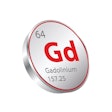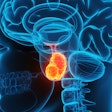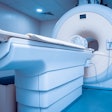CHICAGO - A study presented at the RSNA conference on Thursday by a research team from Riverwoods Medical Center in Provo, UT, showed that different commercial gadolinium (Gd) preparations dechelate at varying rates in human bone tissue.
“The study was undertaken to assess whether gadolinium from commercially available MRI contrast agents is retained in human bone tissue following intravenous administration at a routinely used clinical dose,” said Andrew Gibby, who presented the results of his team’s research.
The researchers collected human bone tissue following injection of 0.1 mmol/kg gadolinium chelate to patients who underwent hip joint replacement surgery. The injection was performed at least three days but not more than eight days prior to surgery, said Gibby.
Harvested femoral heads were bivalved
with a hacksaw. Half of the tissue sample was sent to Magnetic Research in
Another lab, Elemental Research in
“There were no significant differences among the three groups in terms of mean patient age or days elapsed from gadolinium exposure to harvest of the bone used in the study,” said Gibby.
According to the team, the ICP-AES testing revealed bone tissue retention of gadolinium at 1.18 (± .42) μg/g for the Omniscan patients and 0.466 (±.21) μg/g for the ProHance patients. The ICP-MS data showed that the mean gadolinium retention in bone samples from patients given Omniscan was 2.85 (± 3.39) μg Gd/g, and from patients given ProHance was 0.48 ± 0.27 μg Gd/g, said Gibby.
“No gadolinium was detected in the bone samples of the control group using either analytical method,” he noted
The researchers dropped the high and low patient values for each product and determined that the Omniscan-dosed patient average was 1.90 (± 0.62) μg Gd/g bone, and the ProHance-dosed patient average was 0.45 (± 0.22) μg Gd/g bone, they noted.
“Both the ICP-MS and ICP-AES data demonstrated that the use of the Omniscan gadolinium contrast resulted in 2.5-4 times more gadolinium deposition in human bone tissue than the use of the ProHance gadolinium preparation,” said Gibby.
Gibby noted that the amount of uncomplexed free gadolinium found in human bone tissue after routine diagnostic use might be of clinical concern for pediatric and renal studies, but that further studies were indicated before reaching definitive conclusions.
By Jonathan S.
Batchelor
AuntMinnie.com staff writer
Copyright © 2003 AuntMinnie.com

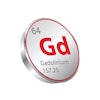
.fFmgij6Hin.png?auto=compress%2Cformat&fit=crop&h=100&q=70&w=100)
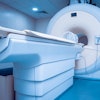



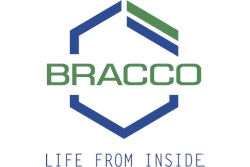
.fFmgij6Hin.png?auto=compress%2Cformat&fit=crop&h=167&q=70&w=250)
